- Ua a‘o ‘ia ‘o ia e ia 우아 아오 이아 오 이아 에 이아 (2024-25)
- Overhauled Stories (2023)
- MoCA Busan (2022)
- HoMA (2022)
- MoMA New York (2021)
- Hair is a piece of head 머리는 머리의 부분 (2021)
-
And who has not dreamed of violence?
و منو الما حلم بعنف؟ (2018) - Love before Bond (2017)
- CCA Kitakyushu (2016)
- Drawing From A Play (2016)
- 피나는 노력으로 한 [A Woman Whose
Head Came Out Before Her Name] (2015) - 늘 거울 생활 [Life of Always a Mirror] (2014)
- The Tanks at Tate Modern (2012)
- Some Left (2011)
- Line Wall (2011)
- From the Commanding Heights of
the Earliest Natural Fortification
to the Architectonic Innovations
of the Watch Tower
the Development of Observation Balloons
Satellites
Surveillance
there has been no End
to the Enlargement of Field of Perception
Whether I Know You
or not
Matters Less than
How You Appear
to the Objective Eye (2011) - A Still Window From Two or More Places (2010)
- Haus der Kunst (2010)
- Pieces from 'in the room' (2009)
- in the room (Gallery TPW) (2009)
- Witte de With (2008)
- From the commanding heights… (2007)
- in the room (Project Arts Centre) (2007)
- Rijksakademie Open Studio (2005)
- A-DA-DADA (2003)
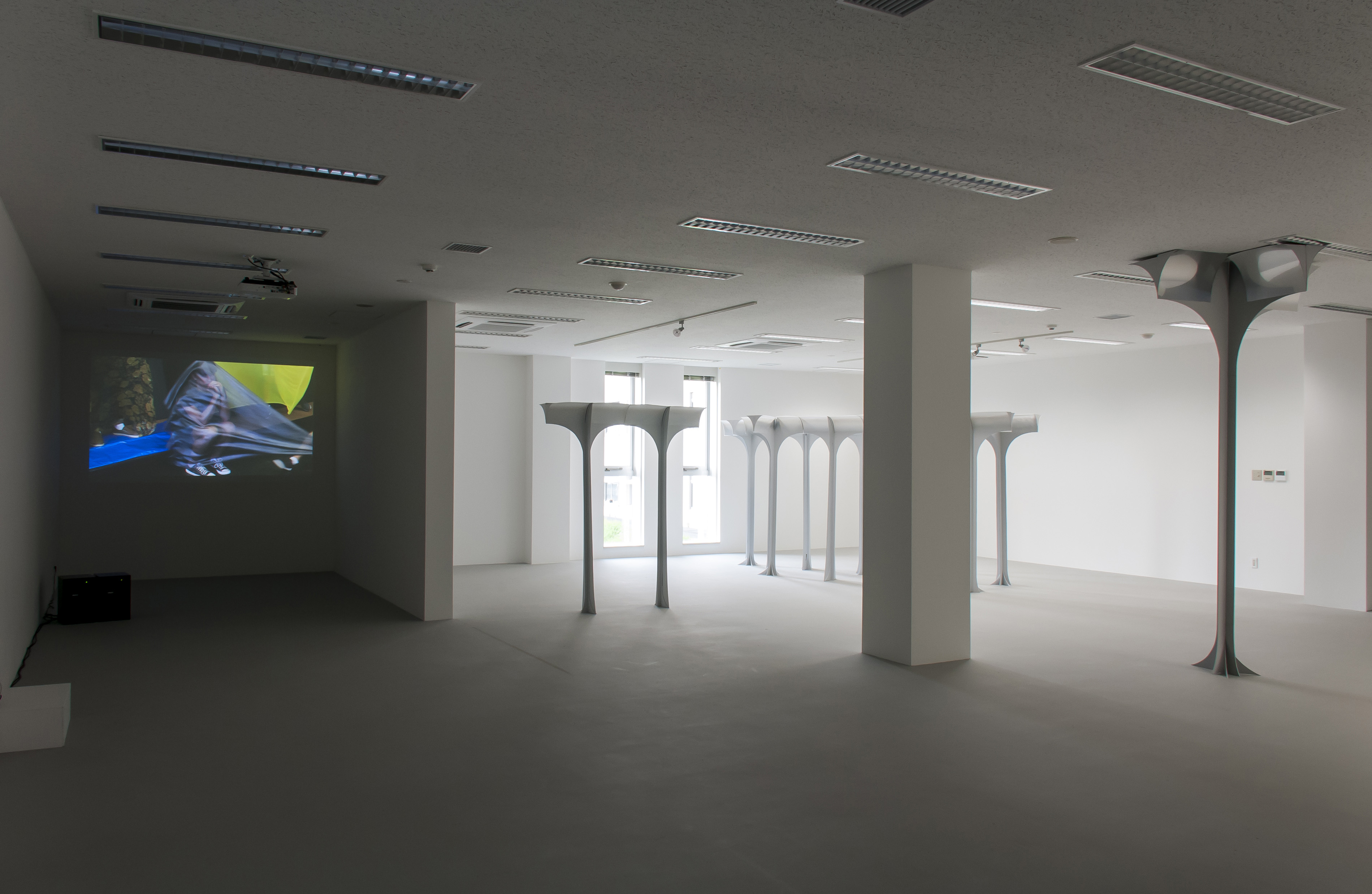
The columns in this installation are a rendition, a sculptural drawing of the Pleasure Pavilion (1964) by Philip Johnson.
Around the time Akiko Miyake invited me to Kitakyushu for a short residency, ending in an exhibition, I had been reading two books* on Philip Johnson. These books informed me about the architect’s zealous support for German Fascism before US participation in World War II. I wanted to explore ways to depict the ethics behind the aesthetics that one is imbued with, by drawing the disjointed correlation between structure and skin in Johnson’s columns.
The surface of the column structures in Johnson’s pavilion is clad above the metal structure. Its surface, which surrounds the shape, does not reflect the structure underneath. It is a copy of another surface that is generated from a whole other historical ground. This copying process is like drawing, which mainly translates the appearance. In drawing the surface’s past, its impetus, and the ethics around that impetus remain unattainable to the viewer.
The columns at CCA, made of thin plywood and laminated shoji paper, are made of two modules: one with two prongs and the other with three prongs. Conjoined together, they formulate matrices of both perpendicular and diagonal axes, continuously morphing from one into another as the viewers walk around the structure.
I designed the columns in three different sets at different scales: adult human scale, child human scale, and giant height scale. I thought of these columns as figures imbued with the past they are unaccountable for. For them, a revelation from the past is always in delay.
I played Apology at UNIS. Much of this video is strung-up raw clips, produced from a workshop that I designed for high school students around their sexuality, skin, and appearance in relation to those depicted in films and literature. At the end of video was attached a song, “각주구검.”
* Schulze, Franz, Philip Johnson: Life and Work, University of Chicago Press, 1996; Stern, Robert J. M., The Philip Johnson Tapes: Interviews, The Monacelli Press, 2008
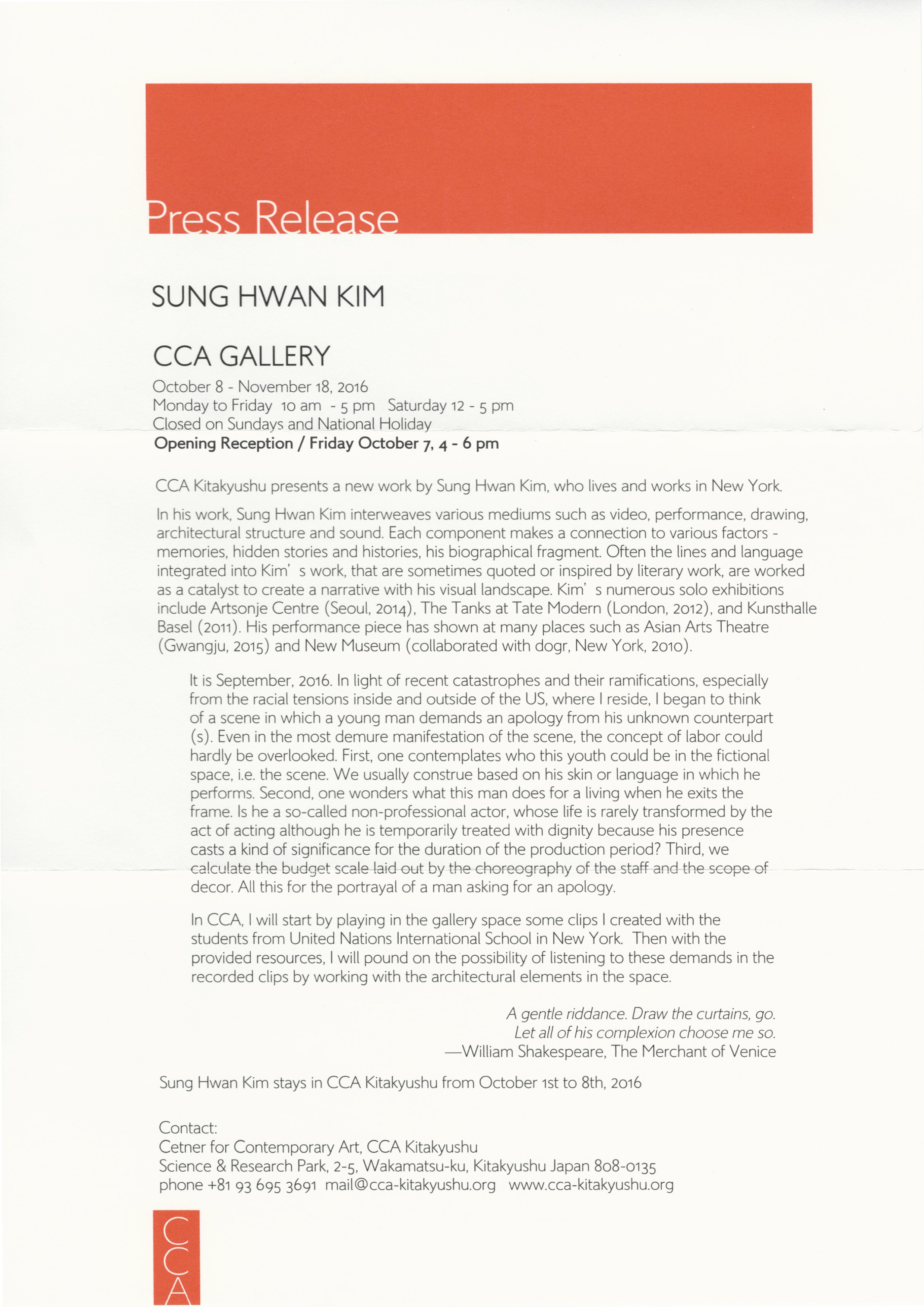
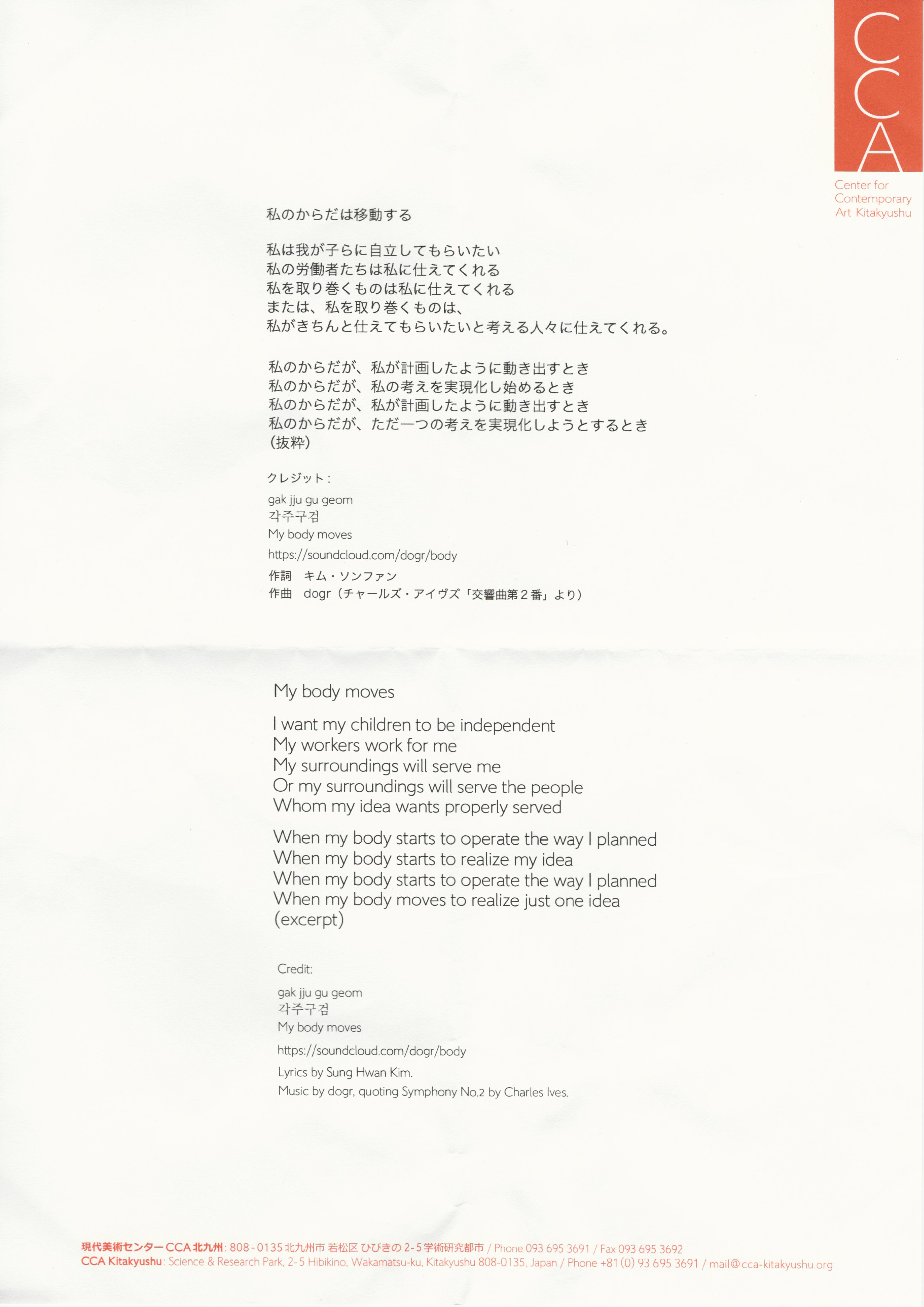
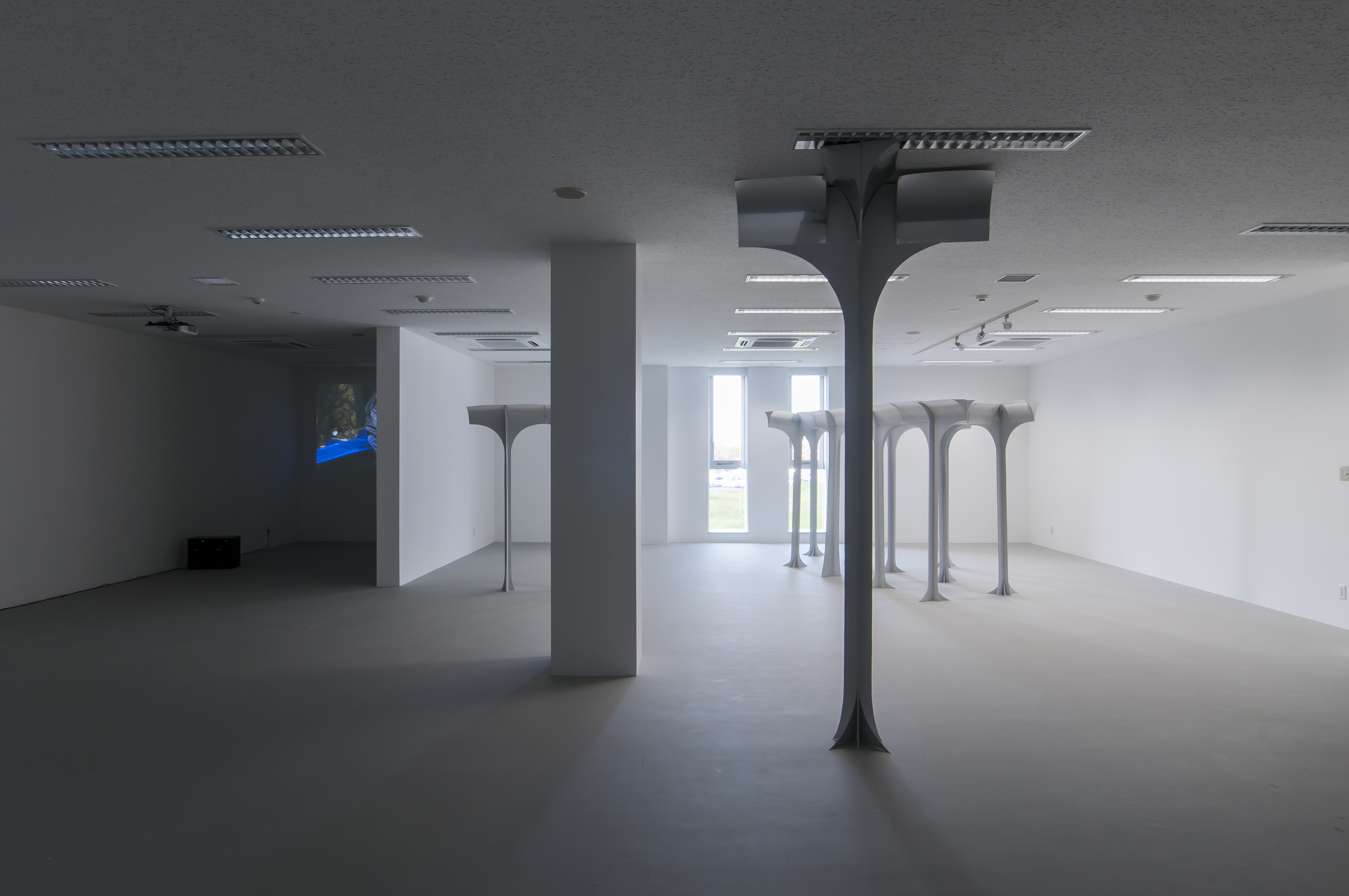
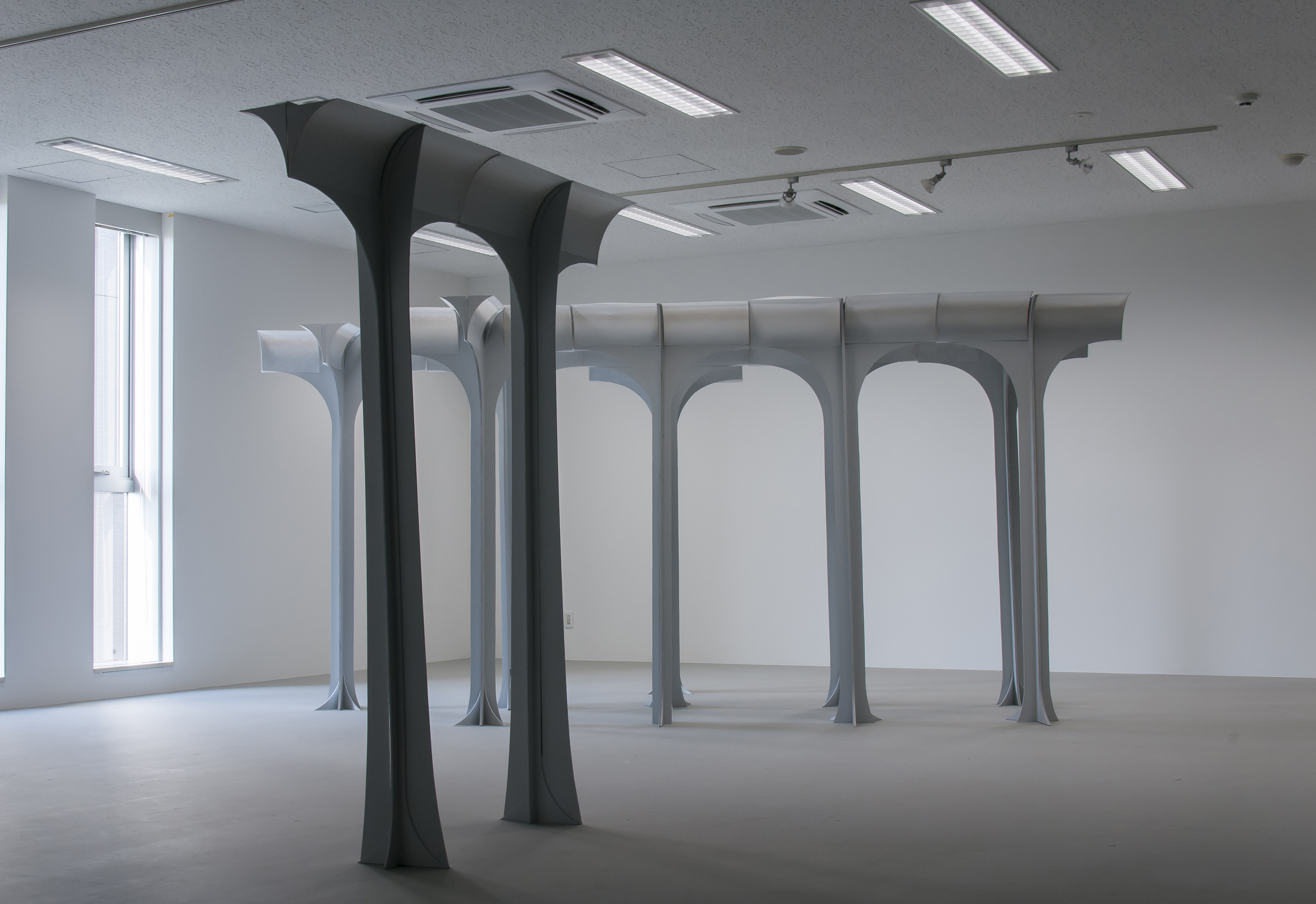
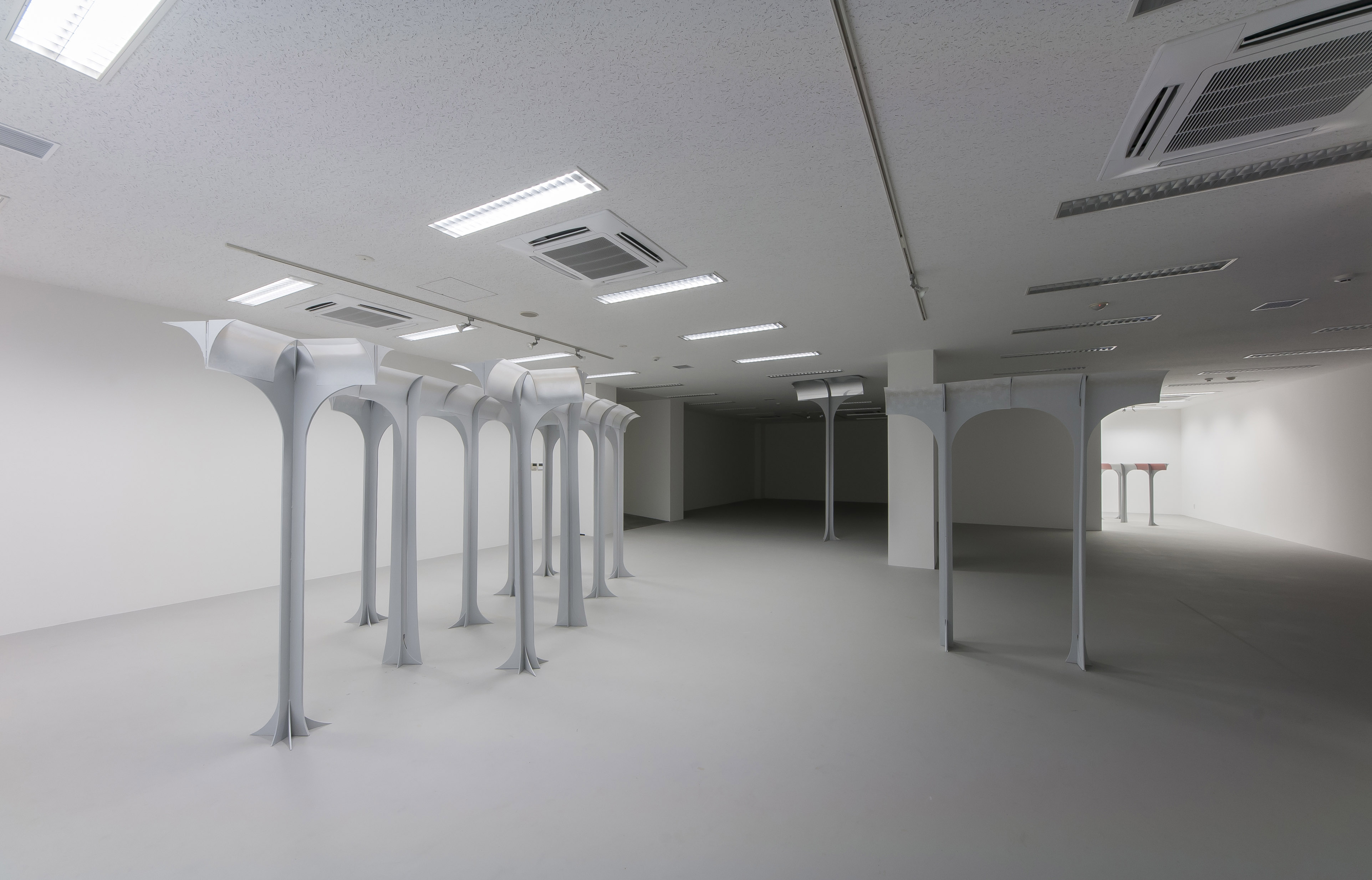
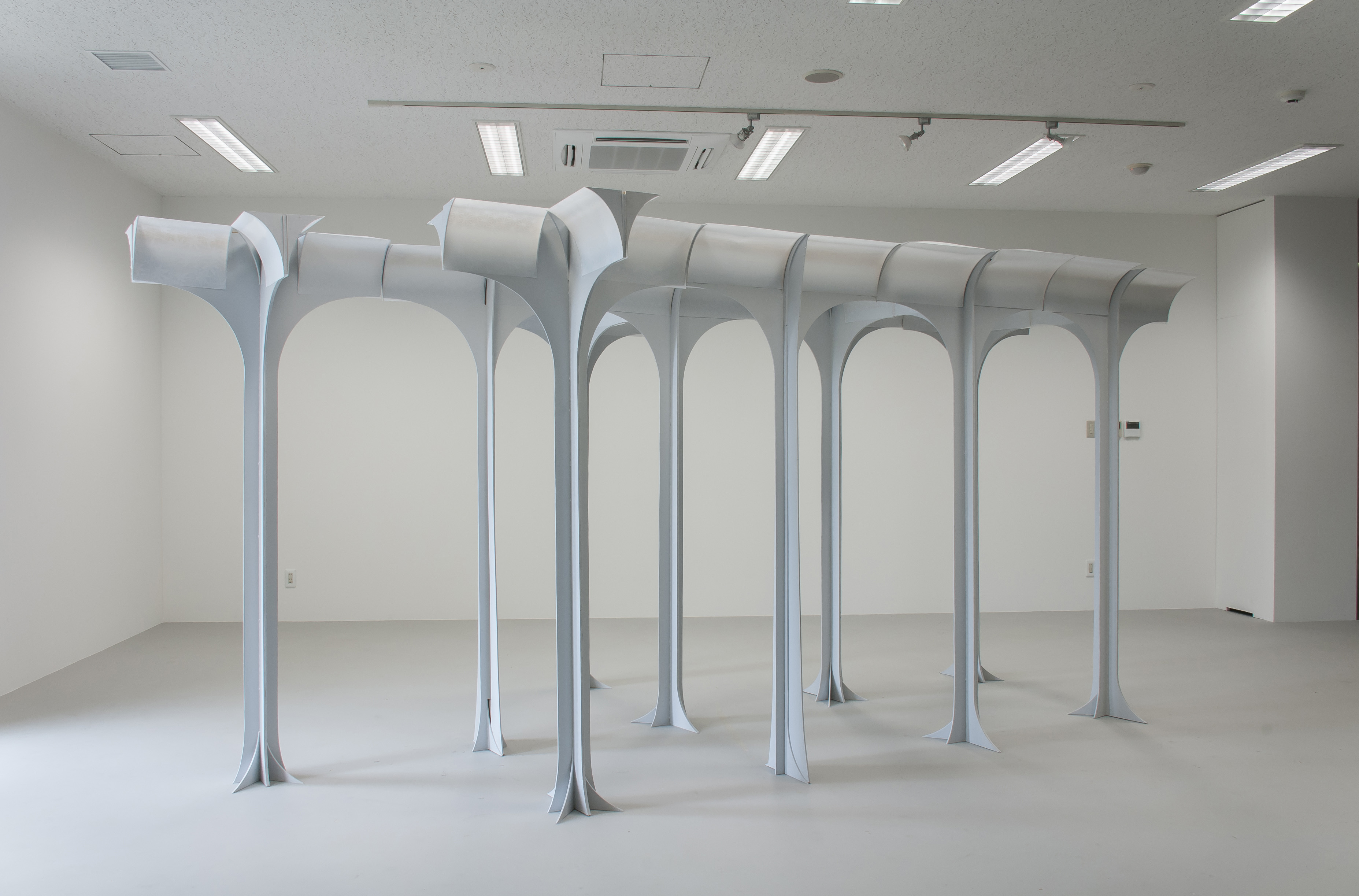
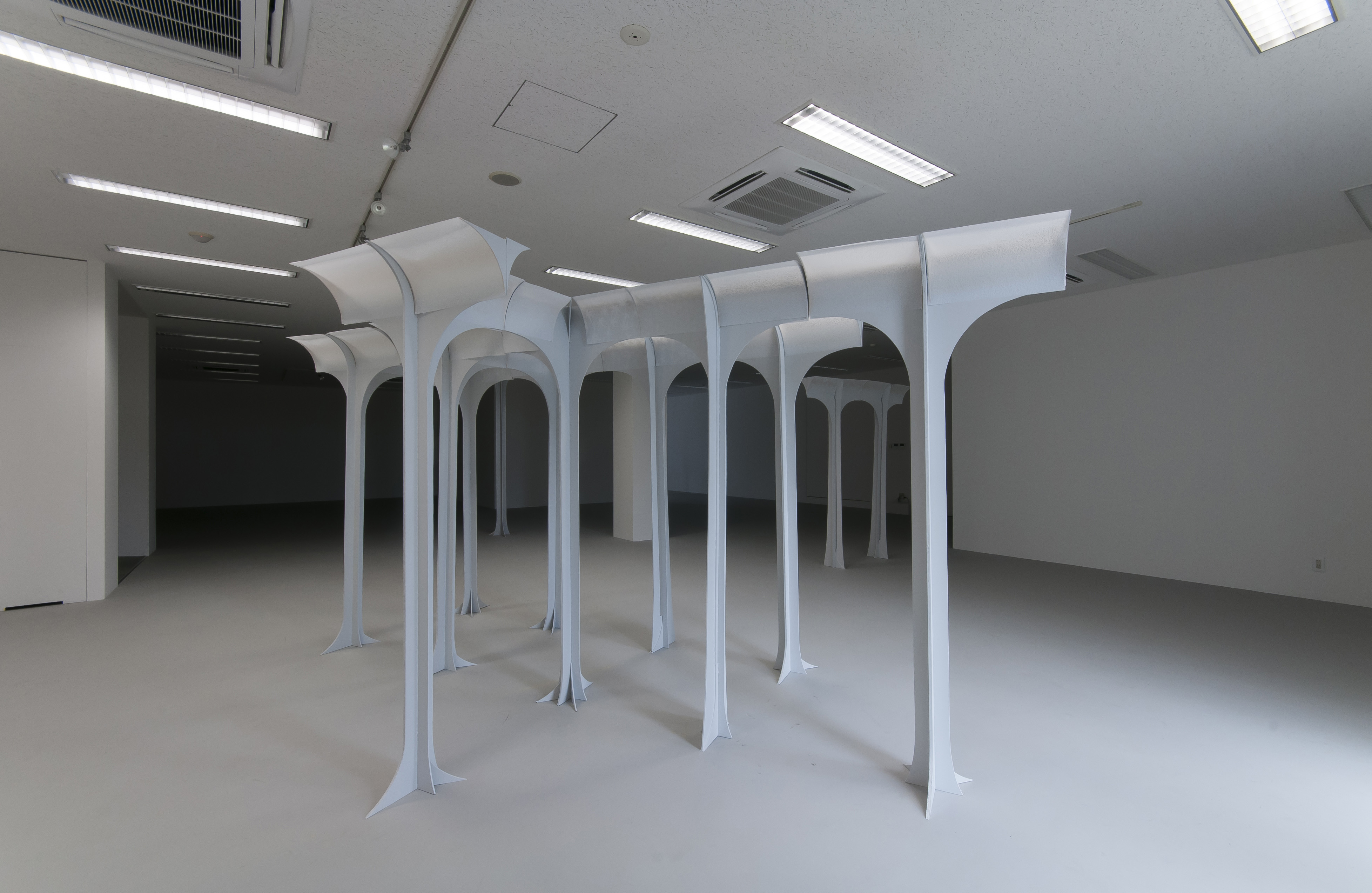
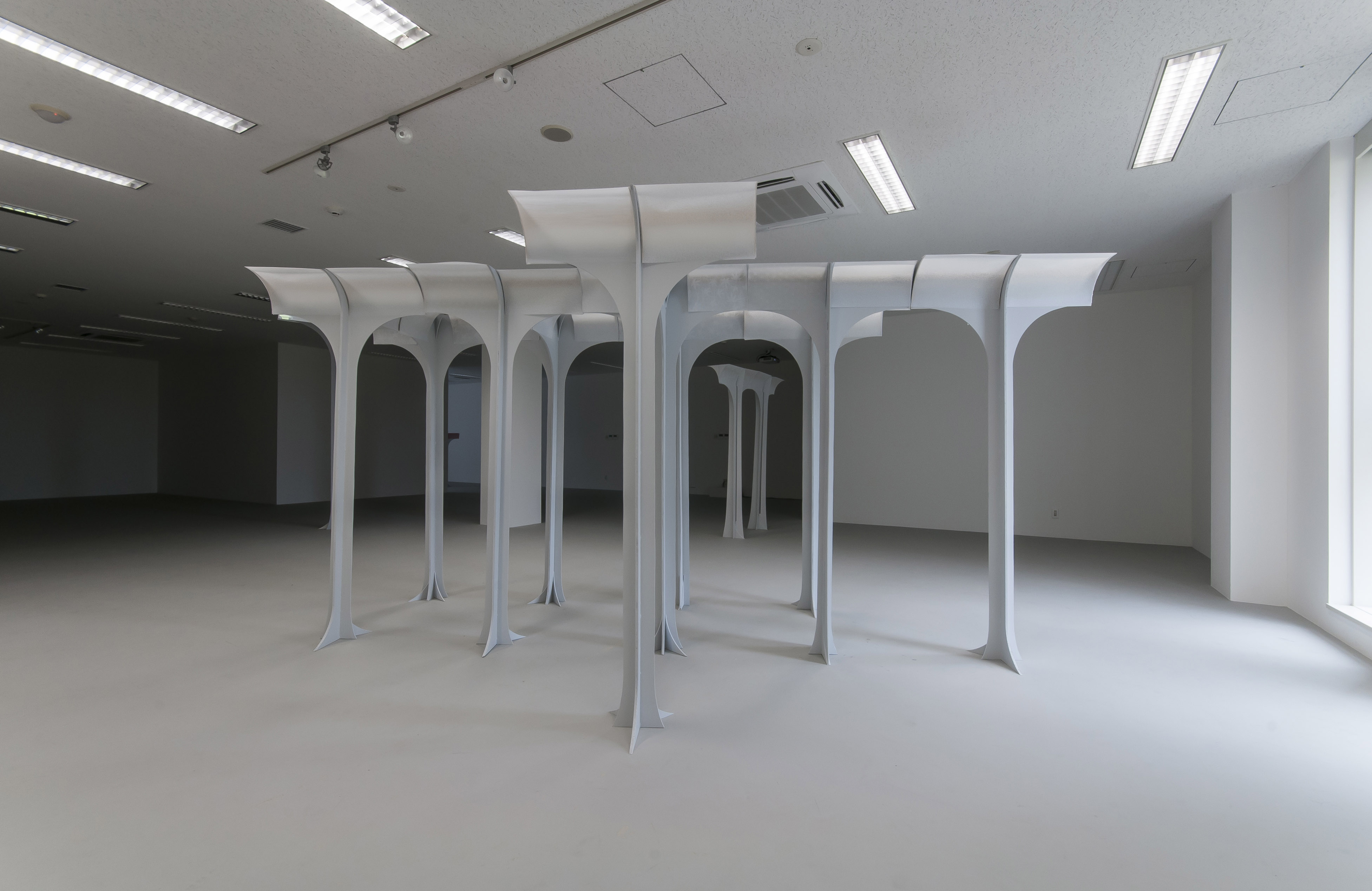
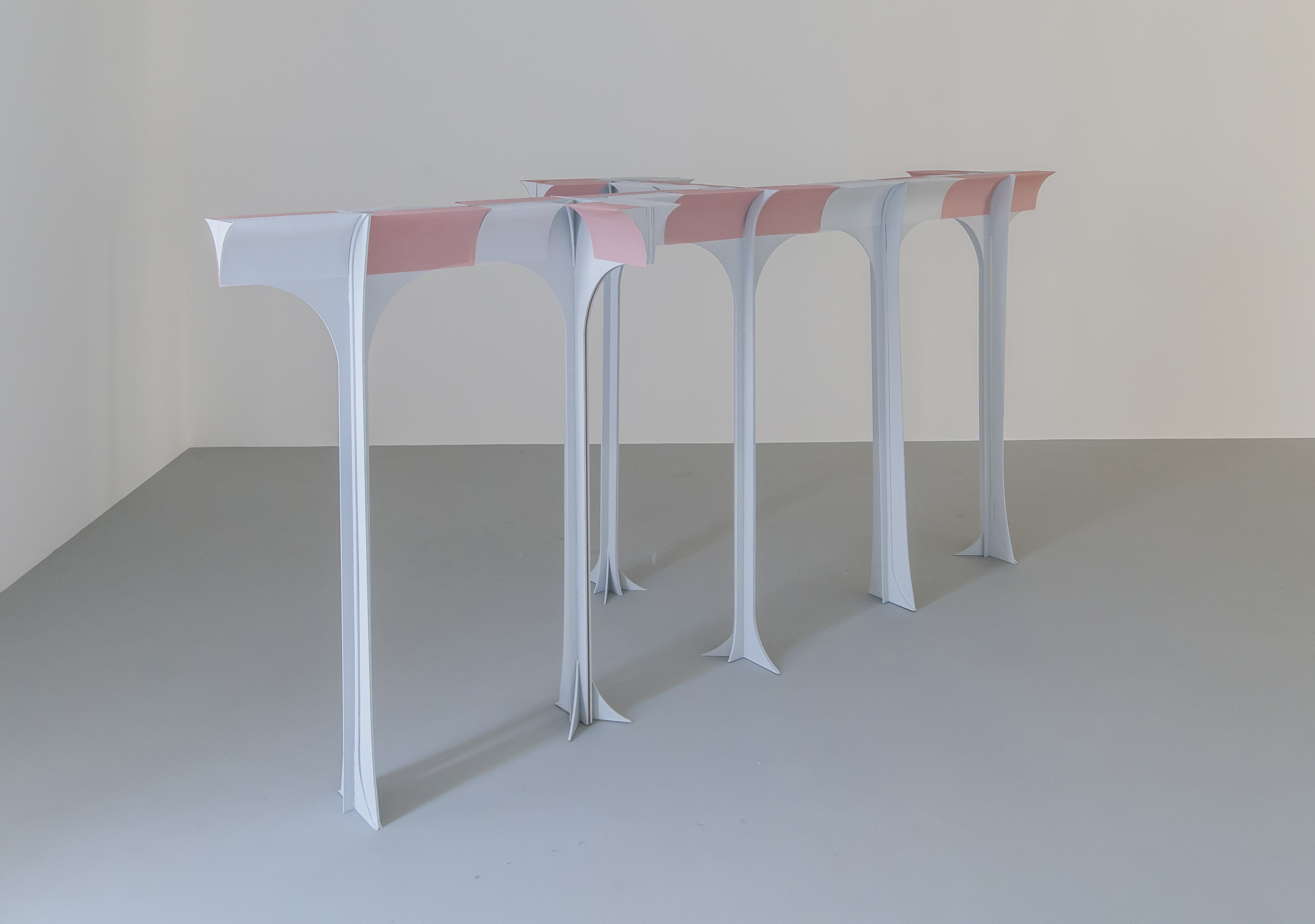
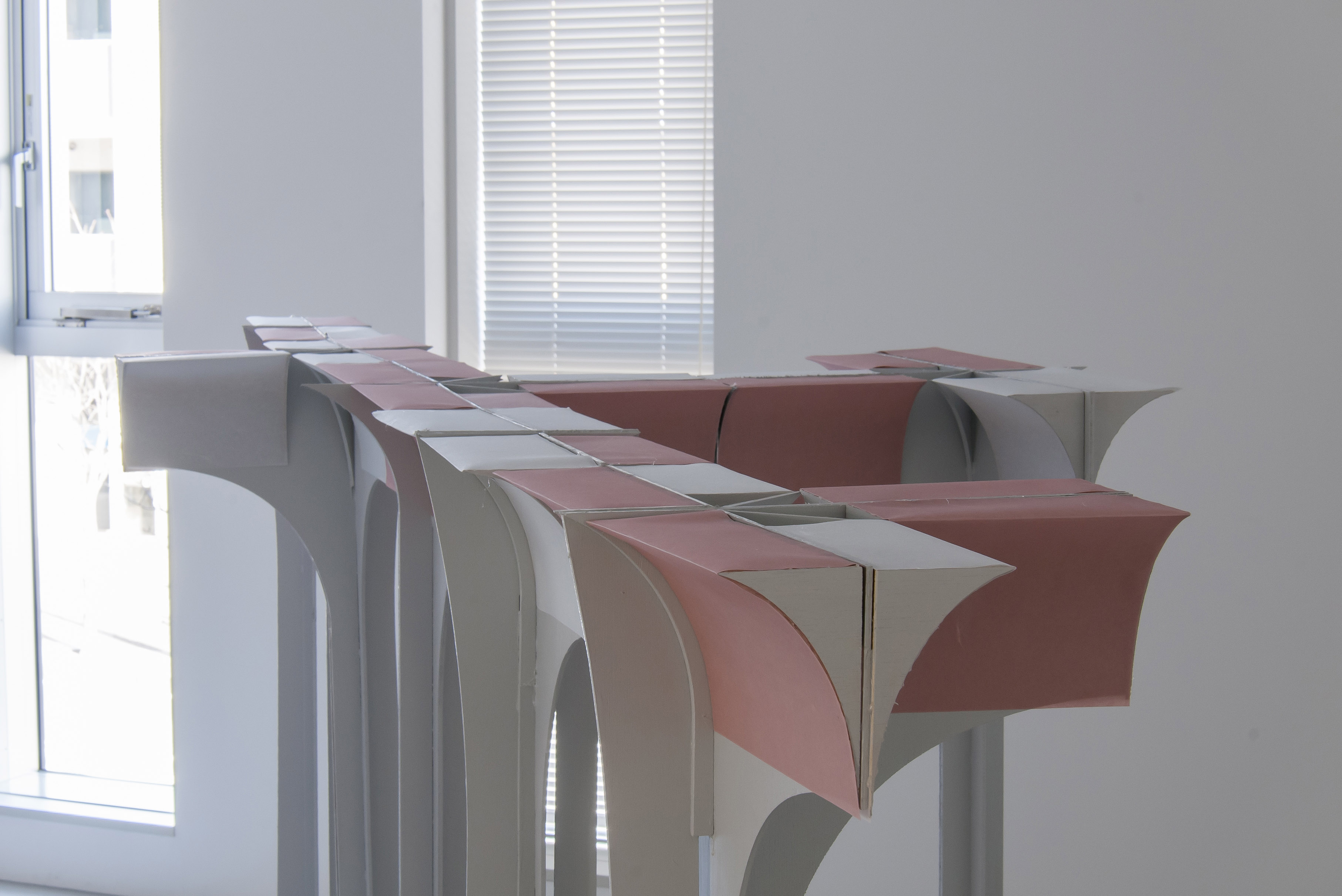
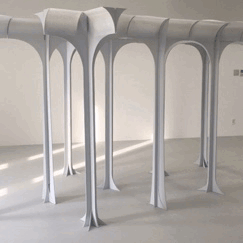
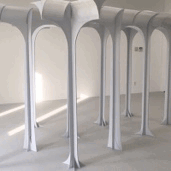


1-9: installation view
10, 11: GIFs of axial shifts
12: video clip of Keiichiro Iki cutting wood with a utility knife
13, 14: production still, Sung Hwan Kim, 2016, Center for Contemporary Art CCA Kitakyushu,
Kitakyushu, Japan; curated by Akiko Miyake; courtesy of Artist (photo credit: Ken'ichi Miura)